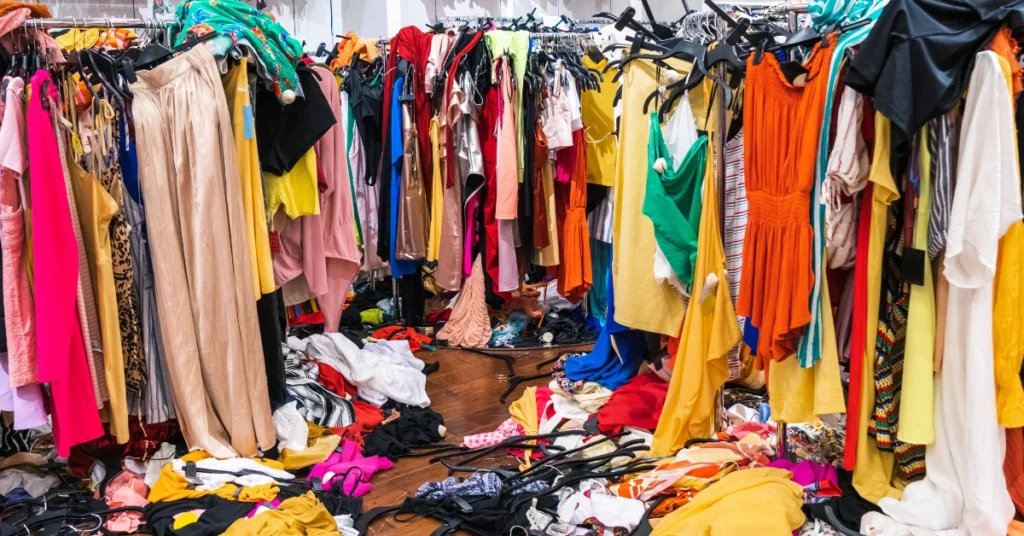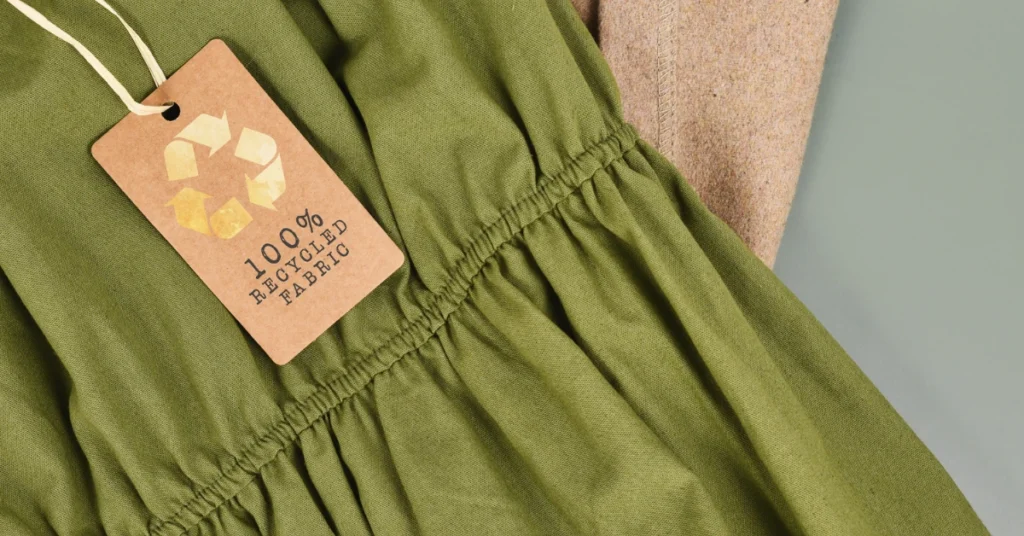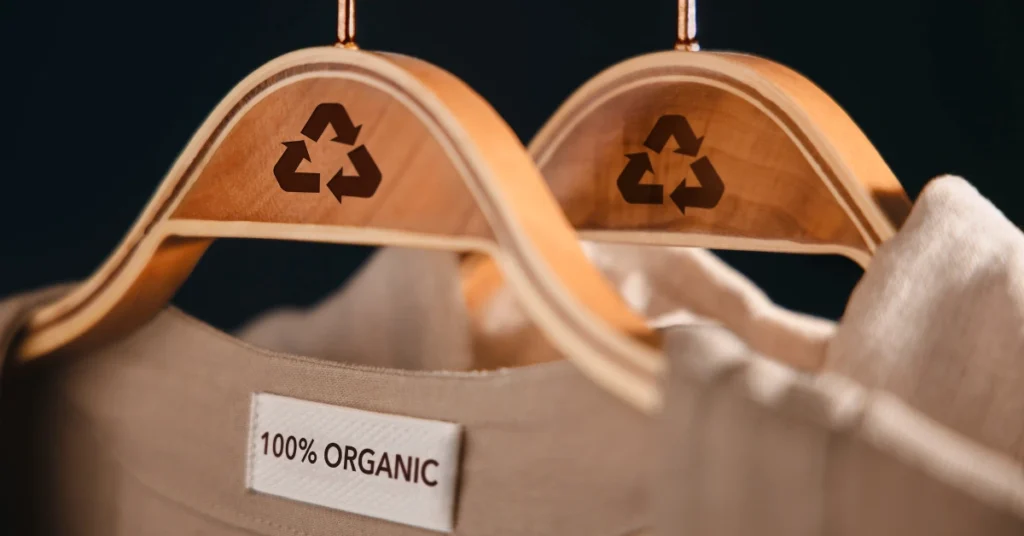Sustainable fashion and minimalism have become increasingly popular as people seek ways to reduce their environmental impact and make more intentional choices. Sustainable fashion focuses on using eco-friendly materials and ethical production methods, while minimalism emphasizes owning only what adds value to your life. Together, they create a powerful combination for building a wardrobe that is both stylish and environmentally conscious.
A minimalist, sustainable wardrobe reduces waste, minimizes clutter, and makes it easier to create versatile outfits with fewer pieces. Ready to dive into sustainable fashion and minimalism? Let’s explore the essentials of building a greener wardrobe.
Understanding the Environmental Impact of Fast Fashion
Fast fashion is designed to keep up with ever-changing trends by producing inexpensive clothing quickly and in large quantities. But this rapid production comes with a high environmental cost:
- Resource Intensive: Fast fashion requires large amounts of water, energy, and synthetic dyes, leading to high resource use.
- High Waste and Pollution: Each year, billions of pounds of clothing end up in landfills, and synthetic fabrics release microplastics into the ocean.
- Social Consequences: Fast fashion is often linked to poor working conditions and low wages in manufacturing countries.
By choosing sustainable fashion over fast fashion, you’re supporting a shift towards an industry that values the planet and people over profit.
Learn more about how you can make a difference with sustainable choices in our Eco-Friendly Home ImprovementsGuide.

Starting a Minimalist Wardrobe: Quality Over Quantity
One of the most effective ways to reduce your environmental impact is to adopt a capsule wardrobe. A capsule wardrobe consists of a small, curated selection of high-quality, versatile pieces that can be mixed and matched for any occasion.
Key Tips for Building a Minimalist Wardrobe
- Choose Timeless Pieces: Opt for classic styles that never go out of fashion, like blazers, denim, and simple t-shirts.
- Focus on Neutrals and Complementary Colors: Neutral colors, like black, white, gray, and beige, pair well together, creating more outfit combinations.
- Look for Sustainable Fabrics: Choose eco-friendly materials like organic cotton, linen, and hemp, which have a lower environmental impact.
Building a minimalist wardrobe reduces clutter and makes getting dressed effortless. For more wardrobe ideas, check out our Zero-Waste Lifestyle Guide for tips on minimizing waste in every aspect of life.
Choosing Sustainable and Ethical Brands
Choosing sustainable brands can make a big difference in reducing your environmental impact. Look for brands that prioritize eco-friendly materials, ethical labor practices, and transparent supply chains. Certifications such as Fair Trade, GOTS (Global Organic Textile Standard), and B Corp indicate a brand’s commitment to environmental and social responsibility.
Examples of Sustainable Fashion Brands
- Patagonia: Known for its commitment to environmental activism and transparency.
- Everlane: Focuses on ethical production, high-quality materials, and fair pricing.
- Pact: Offers affordable, organic cotton basics and loungewear.
When choosing sustainable fashion, prioritize quality over quantity and consider purchasing from brands that align with your values.
For a more comprehensive list, visit our Sustainable Products Guide.
Eco-Friendly Fabrics: Making Conscious Choices
Choosing the right fabrics is key to creating a sustainable wardrobe. Here are a few options that reduce environmental impact:
- Organic Cotton: Grown without synthetic pesticides and requires less water than conventional cotton.
- Hemp: A hardy crop that needs little water and few pesticides, making it one of the most eco-friendly materials.
- Recycled Fabrics: Recycled polyester and other repurposed materials offer durability while keeping plastic waste out of landfills.
For more innovative sustainable materials, look for Tencel and bamboo fabrics, both of which are biodegradable and come from renewable sources.

Tips for Maintaining a Sustainable Wardrobe
Caring for your clothing properly not only extends its life but also reduces the need to buy new items frequently, saving resources in the process.
Care Tips for Longevity
- Wash Sparingly and on Cold: Washing clothes only when needed and on a cold cycle prevents wear and tear, saves energy, and keeps fabrics looking new.
- Air Drying: Air drying is gentler on fabric fibers and helps reduce energy use from dryers.
- Repair and Upcycle: Don’t throw away items with minor damage. Learning to sew on a button or fix a hem can keep your clothes wearable for years. Upcycling is also a creative way to give old clothes a new look.
Shopping Second-Hand: Embrace Thrifting and Resale Platforms
Buying second-hand is a great way to practice sustainability without adding to the demand for new resources. Thrifting also gives unique items a second life and keeps clothing out of landfills.
Popular Resale Platforms
- ThredUp: One of the largest online consignment stores offering gently used fashion.
- Poshmark: Allows you to buy and sell second-hand items directly with other users.
- Depop: A popular app for finding unique, vintage, and trendy pieces.
Shopping second-hand is budget-friendly and environmentally friendly. For beginners, Guide to Thrifting and Second-Hand Shopping offers tips on how to get started.

Building a Sustainable Fashion Routine
A minimalist wardrobe is a great foundation, but maintaining sustainable habits is key to keeping your wardrobe eco-friendly.
- Declutter Mindfully: Review your wardrobe every few months, donating or selling items you no longer need. Avoid the temptation to replace every discarded item.
- Create a Seasonal Capsule: Adjust your wardrobe seasonally to focus on essentials, making it easier to rotate pieces and keep your closet manageable.
- Use the “One In, One Out” Rule: When you bring a new item into your wardrobe, consider parting with something you no longer wear. This keeps your closet balanced and reduces excess.
Conclusion: The Long-Term Benefits of Sustainable Fashion and Minimalism
By adopting sustainable fashion and minimalism, you’re not only helping the environment but also building a wardrobe that reflects intentionality and quality. A minimalist, eco-friendly wardrobe cuts down on waste, saves money in the long run, and gives you a sense of freedom from the pressures of fast fashion trends.
Start small by identifying which areas of your wardrobe you’d like to improve. Replace fast-fashion pieces with high-quality, sustainable alternatives, explore second-hand options, and care for your clothes to make them last.
Want more tips for a sustainable lifestyle? Visit our Sustainability Guides for practical ways to live a greener, more conscious life.























